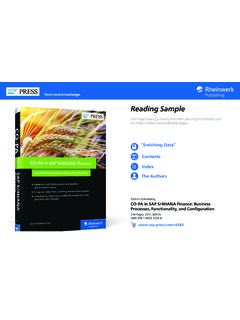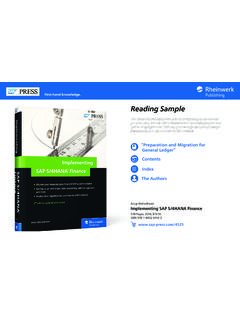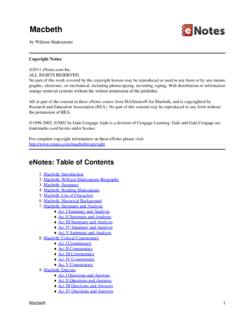Transcription of MACBETH’S SOLILOQUY: ACT 2 SCENE 1- A CRITICAL …
1 1 macbeth S SOLILOQUY: ACT 2 SCENE 1- A CRITICAL ANALYSIS POINTS OF OBSERVATION EVIDENCE ANALYSIS This soliloquy of macbeth s, just prior to the murder of King Duncan is an exemplary piece in revealing the troubled state of mind and in unravelling the hidden thoughts and feelings. Like all other soliloquies in Shakespearean drama, it justifies the requirements of the Elizabethan theatre which required the character s thoughts and feelings to be brought out to the audience through verbal expression. a rhetorical question; personification; visual imagery; direct address to the dagger Is this a dagger which I see before me, The handle toward my hand?
2 Come, let me clutch thee. The rhetorical question which projects the conflict and confusion in macbeth s own mind, would create a similar impact on the audience. The vision of the dagger, which in modern psychology would be related to as a hallucination, projects macbeth s inner wish to use it as a means of putting Duncan to death. a contradiction; antithesis; assonance; the repetition of thee ; PERSONIFICATION I have thee not, and yet I see thee still The contradiction represents the ambivalence and the ambiguity within macbeth s own mind; he is completely perplexed; the use of the negative underscores the significance of the dagger and is reinforced through the use of assonance as well as the use of repetition.
3 THE DAGGER HAS BEEN PERSONIFIED. The use of archaic words; adjective phrase- fatal vision ; rhetorical question Art thou not, fatal vision, sensible To feeling as to sight? macbeth is seen grappling with his doubts and apprehensions; the rhetoric represents the ambivalence of his own thoughts; he realizes its visual existence for him, thus addresses it as a fatal vision , while he wonders if it is sensible to feeling . 2 The interrogative tone; visual imagery; repetition; tactile imagery; personification; noun phrase- a dagger of the mind ; adjective phrase- heat-oppressed brain or art thou but A dagger of the mind, a false creation, Proceeding from the heat-oppressed brain?
4 Here, Shakespeare gives a glaring example of his psychological insight and sounds as the precursor of Sigmund Freud, the father of Modern Psychology, as macbeth clearly doubts whether the vision of the dagger is simply a creation of the agitated mind; the tactile imagery lays emphasis upon the disturbed mind. the use of the present tense I see thee yet, in form as palpable As this which now I draw The use of the present tense creates immediacy as well as jumps over chronology, making the SCENE as palpable in the present as it would have been. macbeth struggles to come to terms with the vision and the real dagger in his hands; the difference between vision and reality seems to diminish for him, thus resulting in his utter bewilderment.
5 His words vacillate between the past tense and the present Thou marshall'st me the way that I was going; And such an instrument I was to use. This signifies the fact that the dagger and all else associated with it, had been a part of macbeth s mental horizon even before the present vision. He had contemplated the use of such an instrument prior to this moment. the personification of the dagger; visual imagery; the archaic words Mine eyes are made the fools o' the other senses, Or else worth all the rest; I see thee still, And on thy blade and dudgeon gouts of blood, Which was not so before - The dagger is continuously personified, which underscores its formidable, yet, only, illusory existence; it was a vision, which was yet, palpable.
6 The gory visual imagery would have significant impact on the audience and serves an effective theatrical purpose. alliteration; the negative; personification There's no such thing: It is the bloody business which informs Thus to mine eyes. The immediate negation of his vision connotes macbeth s inner conflict which tends to deny the concept of the bloody business ; the alliteration lays emphasis upon the conceptualized murder. 3 personification of Nature ; the adjective phrase- wicked dreams ; the curtain d sleep Now o'er the one- half world Nature seems dead, and wicked dreams abuse The curtain'd sleep; These lines capture the SCENE of the hallucination in a manner so as to make it timeless; the dead of night marks the time of evil; Nature, which is life sustaining, seems dead ; (it can also be understood in terms of Nature being dead silent, all activity being still) and curtain d sleep is abused by wicked dreams.
7 Use of the present tense; classical allusion witchcraft celebrates Pale Hecate's offerings, ALLUSION TO GREEK MYTHOLOGY: Hecate is the Greek goddess of magic, witchcraft, the night, moon, ghosts and necromancy and the ruler of the Three Witches. the classical allusion; personification of murder ; simile; sibilance and wither'd murder, Alarum'd by his sentinel, the wolf, Whose howl's his watch, thus with his stealthy pace, With Tarquin's ravishing strides, towards his design Moves like a ghost Here the suggestive image of wither'd murder , uses personification to transform the general concept of murder into a spectral presence stalking the land for its victims.
8 Alarum'd signifies, guarded/watched as sentinel, the wolf signifies close watch. Murder , who is the subject and has a wolf as a guard, has been juxtaposed with Tarquin, the last of the Roman Emperors; murder , which has been personified is suggested to be advancing towards its target, that is, King Duncan, with the ravishing strides of Tarquin, the Roman king who raped Lucrece. The classical allusion In a subtle manner the betrayal and treachery of Tarquin in the shape of a rape is being juxtaposed with murder, thus, it connotes dishonor and 4 treachery. macbeth , displays the flights of his imagination; the use of the simile highlights the soft, stealthy passage of the murderer like a ghost.
9 SOURCE- GOOGLE: {Lucius Tarquinius Superbus (died 495 BC) was the legendary seventh and final king of Rome, reigning from 535 BC until the popular uprising in 509 that led to the establishment of the Roman Republic. He is commonly known as Tarquin the Proud, from his cognomen Superbus (Latin for "proud, arrogant, lofty").} personification; the use of the pronoun; consonance; Tone and atmosphere of guilt, stealth and treachery Thou sure and firm-set earth, Hear not my steps, which way they walk, for fear Thy very stones prate of my whereabout, And take the present horror from the time, Which now suits with it.
10 The steps and their personification and the use of the pronoun, they , link up with the stealthy pace of the wither d murder , and Tarquin s ravishing strides ; this denotes macbeth s guilt as well as fear as he does not want his murderous steps to be heard . The fact that he refers to his steps, which way they walk suggest how macbeth tries to put the burden and the responsibility on his steps , which have been personified and referred to in the third person. There is a subtle juxtaposition of his own unsteady mind and the firm- set earth ; macbeth seems well aware of his prospective crime, thus, the resulting impact of the soliloquy is an atmosphere which is overwhelmed with guilt, stealth and treachery.












